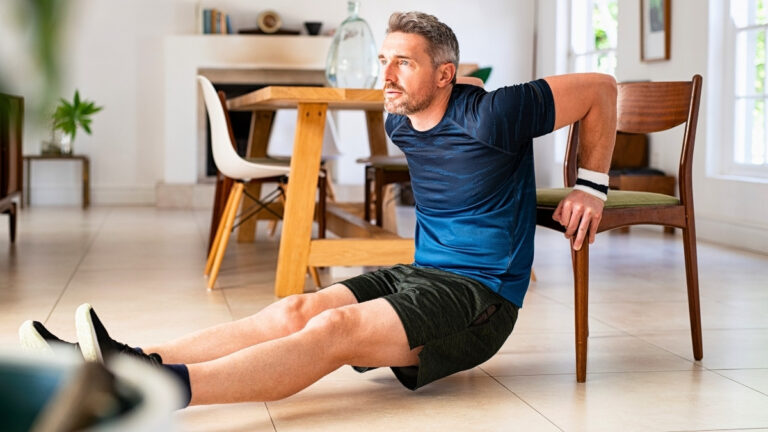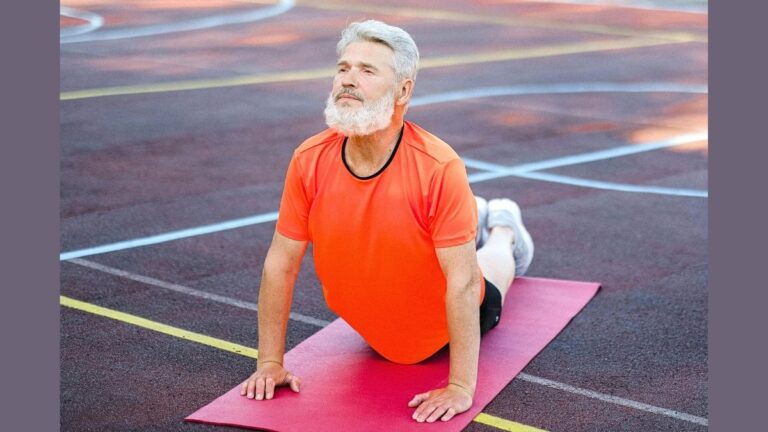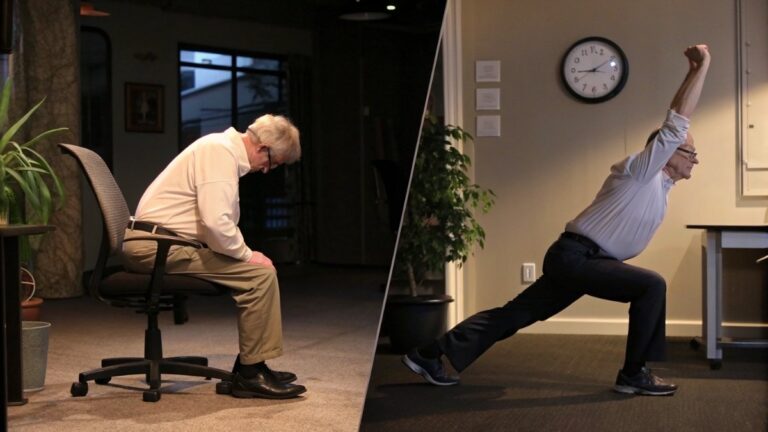Stiff & Weak? Reboot Your Body with These Home Workouts for Aging Gracefully
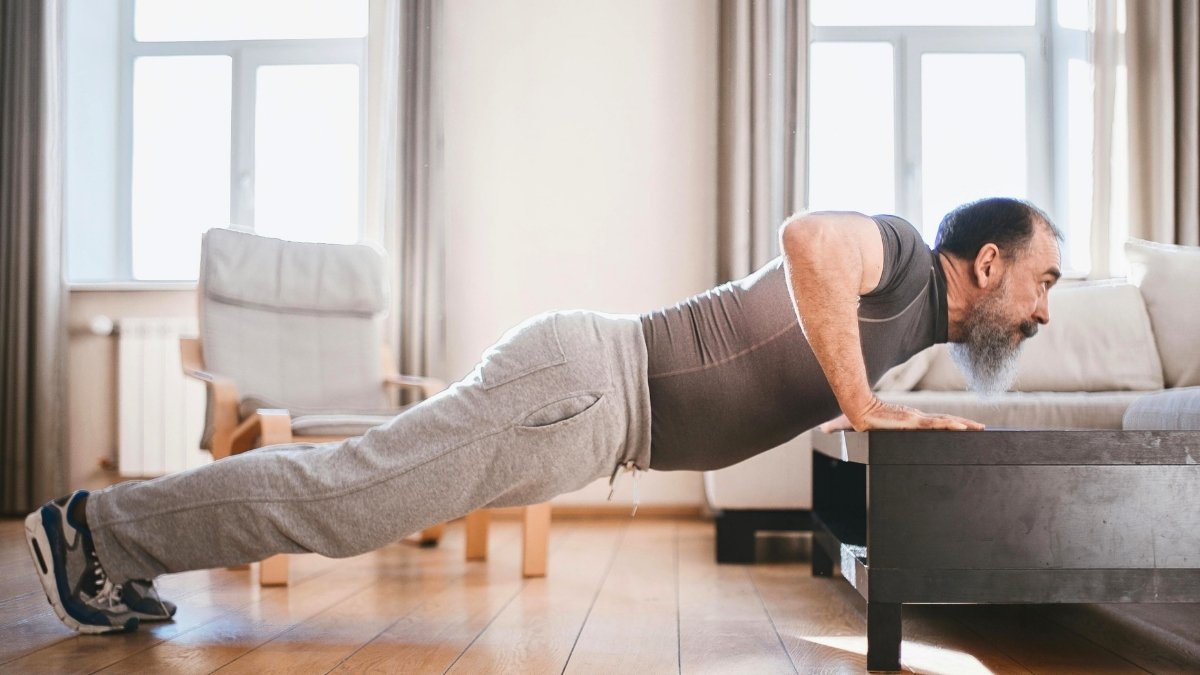
Aging brings inevitable challenges that many people fear most – losing independence, struggling with daily tasks, and watching their bodies weaken over time. After age 30, you lose 3-8% of muscle mass every decade, leading to decreased strength, poor balance, and increased fall risk.
Many older adults avoid exercise due to gym intimidation, mobility limitations, or simply not knowing where to start safely.
The good news is that you can reverse muscle loss and maintain vitality from the comfort of your home. Simple strength training and stretching exercises require no expensive equipment or gym memberships.
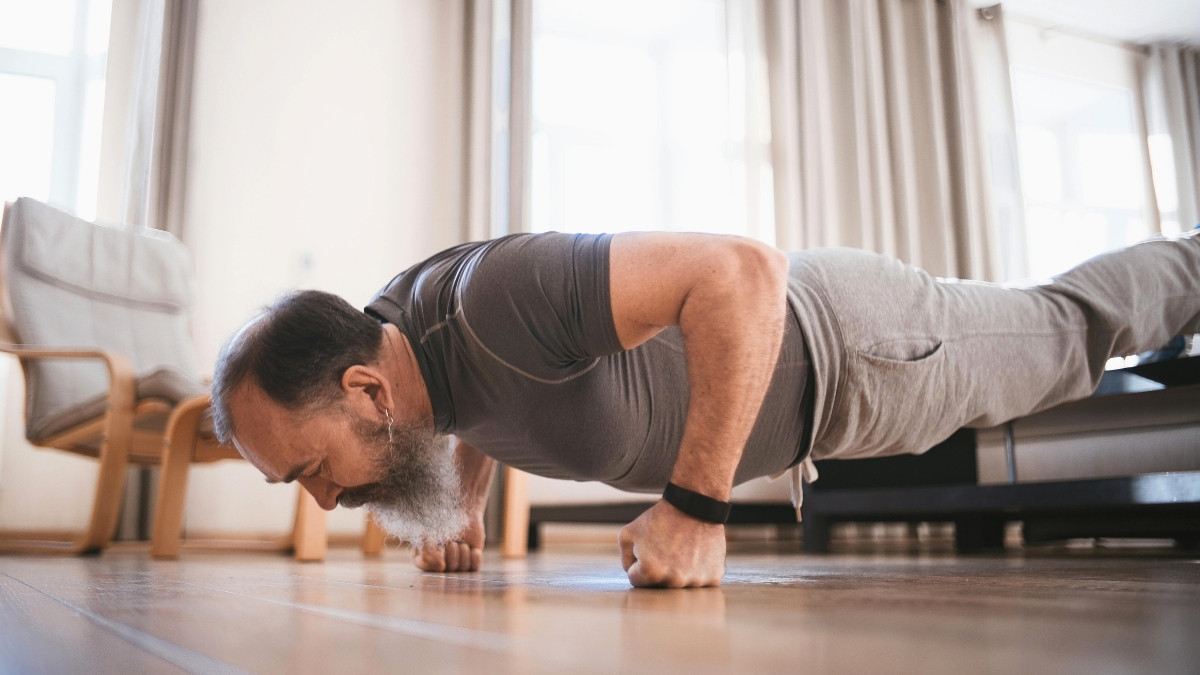
With the right approach, you can build muscle, improve flexibility, and enhance balance using just your body weight and household items. This comprehensive guide provides 15 proven strategies to help you age gracefully while staying strong and independent.
The Science Behind Aging and Muscle Loss (Sarcopenia)
Muscle mass naturally declines as we age, with adults losing approximately 3-8% of their muscle tissue every decade after turning 30. This process, called sarcopenia, accelerates after age 60 and can lead to weakness, falls, and loss of independence.
Research shows that strength training can not only halt this decline but actually reverse it, helping older adults regain muscle mass and strength. Studies demonstrate that consistent resistance exercise can increase muscle protein synthesis by up to 50% in adults over 65.
The good news is that these benefits can be achieved with simple home exercises. Your body responds to strength training at any age, making it one of the most powerful tools for healthy aging.
Tips:
- How to perform: Start with bodyweight exercises 2-3 times per week, gradually increasing intensity as your strength improves
- Key insight: Muscle loss accelerates dramatically after age 60, but strength training can restore muscle mass even in people over 90
- Important factor: Consistency matters more than intensity – regular moderate exercise beats sporadic intense workouts
Creating a Safe Home Environment for Exercise
Your home workout space doesn’t need to be large, but it must be safe and well-organized. Remove any obstacles like loose rugs, furniture with sharp edges, or clutter that could cause trips and falls. Ensure adequate lighting so you can see clearly during exercises.
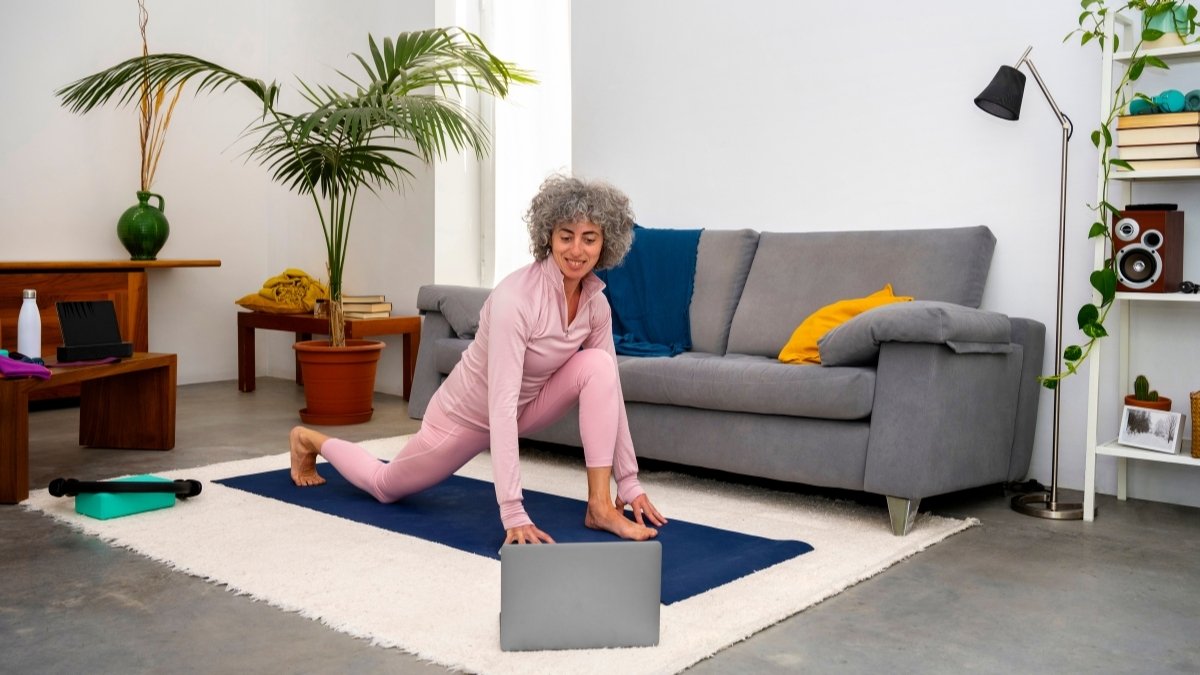
Keep a sturdy chair nearby for support during balance exercises and stretches. Store any equipment in designated areas to prevent accidents. Consider exercising near a wall for additional support when needed. Temperature control is also important as older adults may be more sensitive to heat during physical activity.
Tips:
- How to perform: Clear a 6×6 foot area, ensure bright lighting, and keep a sturdy chair within arm’s reach
- Safety measure: Place non-slip mats on smooth floors to prevent sliding during exercises
- Smart preparation: Keep water nearby and maintain room temperature between 65-72°F for comfortable exercise
The Perfect Warm-Up Routine for Mature Bodies
Warming up becomes increasingly important as we age because our joints and muscles take longer to prepare for activity. Start with gentle movements that gradually increase blood flow to your muscles and lubricate your joints.
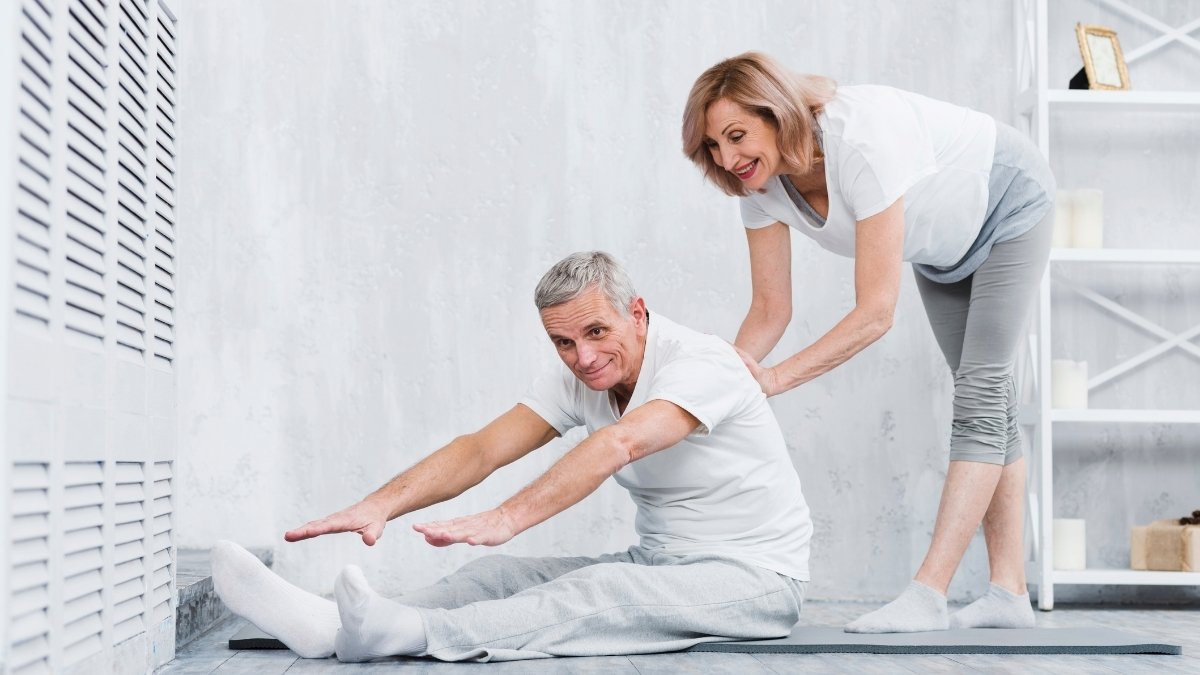
Arm circles, gentle neck rolls, and marching in place are excellent beginning movements. Spend 5-10 minutes on these preparatory exercises before any strength training or stretching session.
Focus on moving through your full range of motion slowly and deliberately. This preparation reduces injury risk and improves exercise performance. Never skip the warm-up, even if you’re feeling energetic and ready to begin.
Tips:
- How to perform: Begin with 2-3 minutes of marching in place, followed by arm circles and gentle joint rotations
- Duration guideline: Spend 5-10 minutes warming up, longer if you feel stiff or have been inactive
- Movement principle: Start slowly and gradually increase the range of motion with each repetition
Bodyweight Squats for Lower Body Strength
Squats strengthen your quadriceps, hamstrings, and glutes while improving functional mobility for daily activities like getting up from chairs. Begin by standing with feet shoulder-width apart, toes pointing slightly outward.
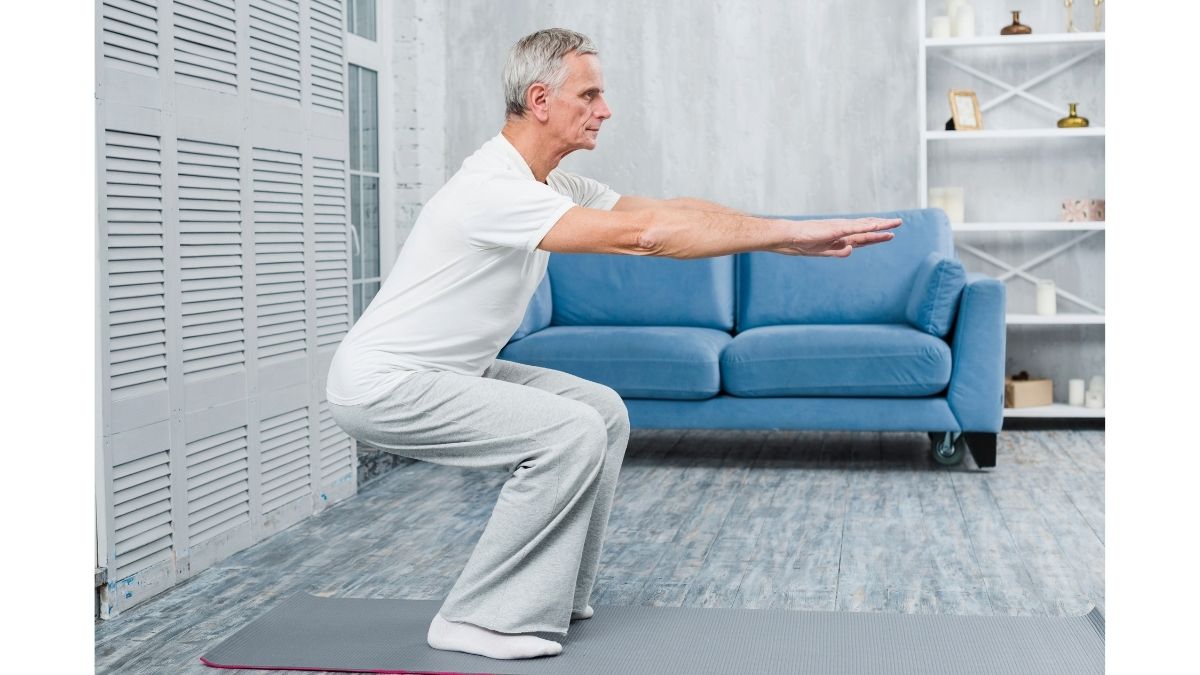
Lower yourself as if sitting back into a chair, keeping your chest up and weight on your heels. Your knees should track over your toes, not cave inward. Start with partial squats if full range of motion feels challenging.
Focus on controlled movement rather than speed. As you progress, aim for deeper squats and more repetitions. This exercise directly translates to better mobility in everyday tasks.
Tips:
- How to perform: Stand with feet hip-width apart, lower slowly while keeping chest up, and push through heels to return to standing
- Modification option: Use a chair behind you for support, touching it lightly during the lowering phase
- Progression strategy: Begin with 5-8 repetitions, gradually increasing to 15-20 as strength improves
Wall Push-Ups for Upper Body Development
Wall push-ups provide an excellent upper body workout without the strain of floor exercises. Stand arm’s length from a wall, place your palms flat against it at shoulder height and width. Step your feet back slightly to create a gentle lean toward the wall.
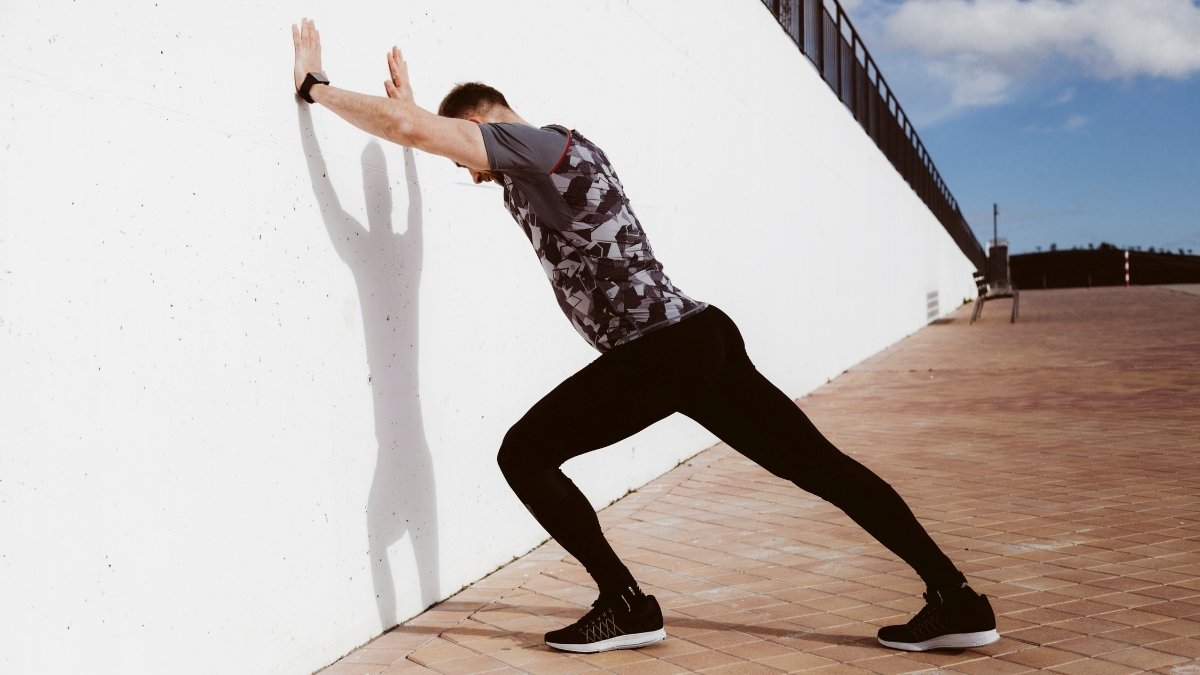
Push yourself away from the wall, then control the movement back to the starting position. This exercise targets your chest, shoulders, and triceps while being gentle on your wrists and back.
Adjust the difficulty by changing your foot position – closer to the wall makes it easier, farther away increases the challenge. The controlled movement pattern helps build strength safely.
Tips:
- How to perform: Stand arm’s length from wall, place hands at shoulder height, and push away with controlled movement
- Angle adjustment: Move feet closer to wall for easier resistance, farther away for increased difficulty
- Repetition range: Start with 8-12 repetitions, focusing on smooth, controlled movements rather than speed
Chair-Assisted Stretching for Hip Flexibility
Hip flexibility is crucial for maintaining mobility and preventing lower back pain as we age. Using a sturdy chair provides stability while allowing you to stretch effectively. Place one foot on the chair seat while standing, keeping your supporting leg straight.
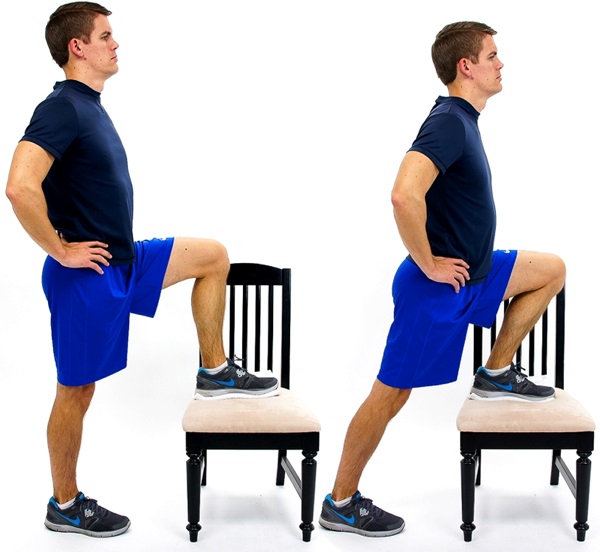
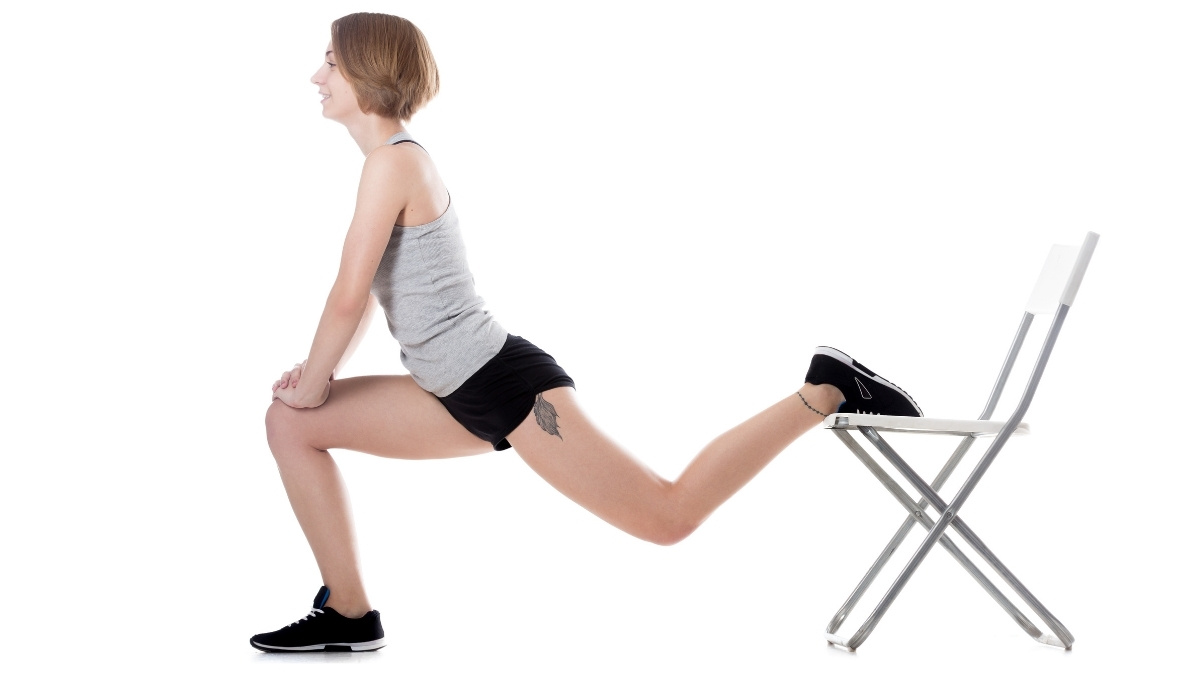
Gently lean forward to feel a stretch in your hip flexor and hamstring. Hold each stretch for 20-30 seconds, breathing deeply throughout. You can also perform seated stretches by sitting sideways on the chair and extending one leg out to the side. These stretches help counteract the effects of prolonged sitting and improve your range of motion.
Tips:
- How to perform: Use a stable chair, place one foot on seat, lean forward gently while keeping back straight
- Hold duration: Maintain each stretch for 20-30 seconds while breathing normally
- Daily routine: Perform these stretches daily, especially after periods of prolonged sitting
The Importance of Balance Training
Balance training becomes increasingly vital as we age because it directly prevents falls, which are a leading cause of injury in older adults. Good balance helps maintain independence and confidence in daily activities.
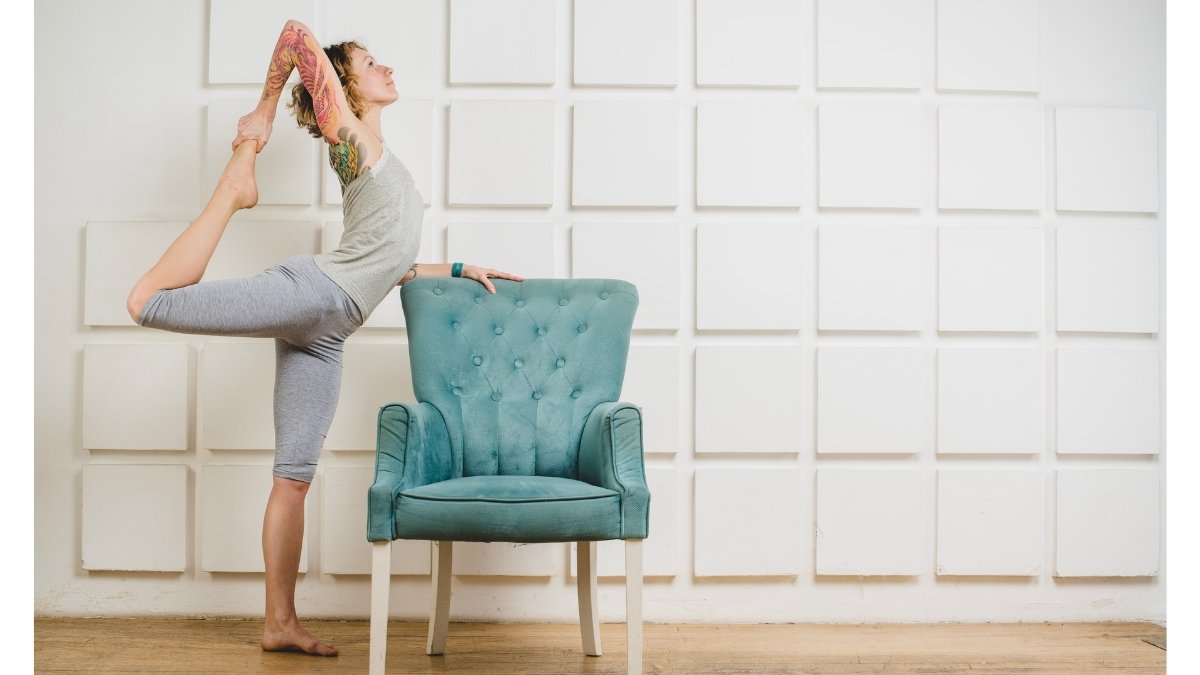
Balance exercises strengthen the small stabilizing muscles throughout your body and improve communication between your brain and muscles. Even simple activities like standing on one foot can significantly improve your stability over time.
Regular balance training also enhances proprioception, your body’s awareness of its position in space. This type of exercise is particularly beneficial because improvements can be seen relatively quickly, often within just a few weeks of consistent practice.
Tips:
- How to perform: Start with simple exercises like standing on one foot while holding onto a chair for support
- Progression method: Gradually reduce reliance on support as balance improves, eventually trying eyes-closed variations
- Practice frequency: Include balance exercises 3-4 times per week, even if just for 5-10 minutes
Single-Leg Stands for Stability and Strength
Single-leg stands are one of the most effective balance exercises you can do at home. Start by standing next to a wall or sturdy chair for support. Lift one foot slightly off the ground and try to maintain your balance for 10-30 seconds.
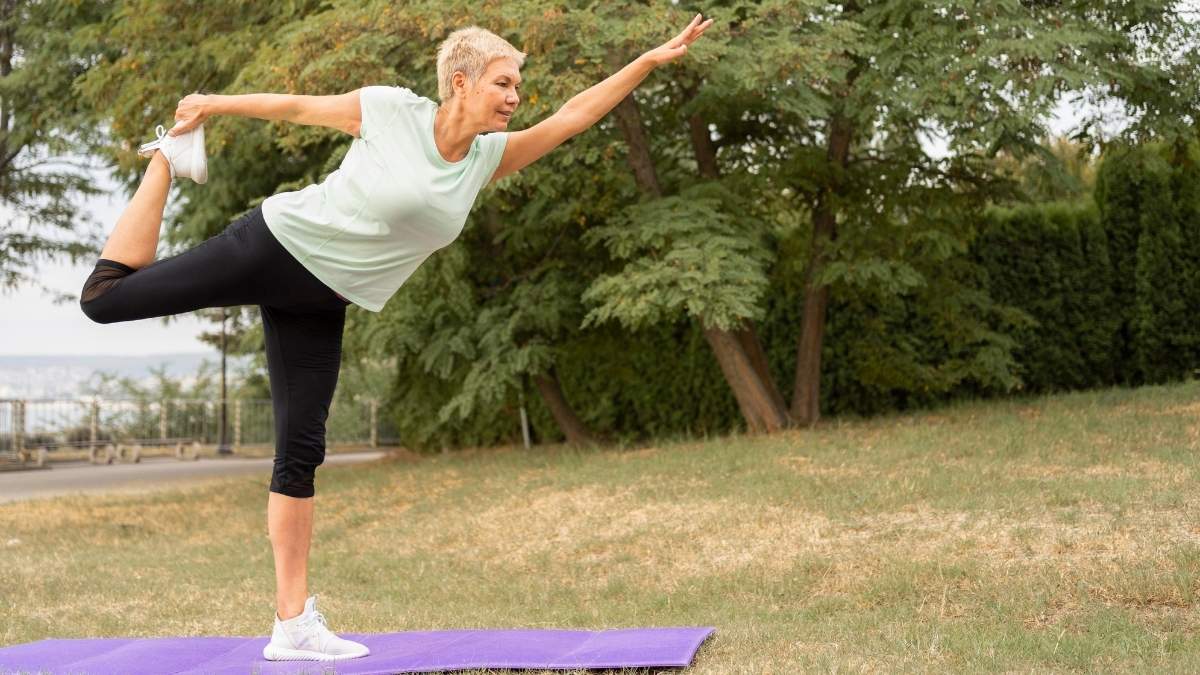
Keep your standing leg slightly bent, not locked straight. Focus on a fixed point in front of you to help maintain stability. As you improve, challenge yourself by closing your eyes or moving your raised leg in small circles.
This exercise strengthens your ankle, calf, and core muscles while improving your reaction time to balance challenges. Practice daily for the best results.
Tips:
- How to perform: Stand near support, lift one foot 2-3 inches off ground, hold for 10-30 seconds while focusing on a fixed point
- Challenge progression: Start with eyes open and hand support, progress to eyes closed and no support
- Balance building: Aim for 30-second holds on each leg, performing 3-5 repetitions per side
Resistance Band Exercises for Joint-Friendly Strength
Resistance bands offer an excellent alternative to heavy weights, providing gentle yet effective strength training for aging bodies. These elastic tools create variable resistance that increases as you stretch them, mimicking natural muscle strength curves.

Unlike weights, bands eliminate the jarring impact on joints while still building muscle strength and endurance. You can perform dozens of exercises with a single band, targeting every major muscle group.
Bands are particularly beneficial for people with arthritis or joint pain because they allow for smooth, controlled movements. The continuous tension throughout the exercise range helps improve muscle activation and coordination. Storage is simple, and bands take up virtually no space in your home.
Tips:
- How to perform: Anchor the band securely, maintain steady tension throughout the movement, and control both the pulling and releasing phases
- Resistance selection: Choose bands with light to moderate resistance initially, progressing to stronger bands as strength improves
- Exercise variety: Use bands for rows, chest presses, leg extensions, and arm curls to work all major muscle groups
Seated Spinal Twists for Core Mobility

Spinal mobility naturally decreases with age, leading to stiffness and back pain that can limit daily activities. Seated twists help maintain rotational flexibility while strengthening your core muscles in a safe, supported position.
Sit tall in a chair with feet flat on the floor, then slowly rotate your torso to one side while keeping your hips facing forward. Hold the position briefly before returning to center and repeating on the other side. These movements help lubricate spinal joints and stretch the muscles along your back.
Regular practice can reduce morning stiffness and improve your ability to look over your shoulder while driving. The seated position eliminates balance concerns while maximizing the stretch.
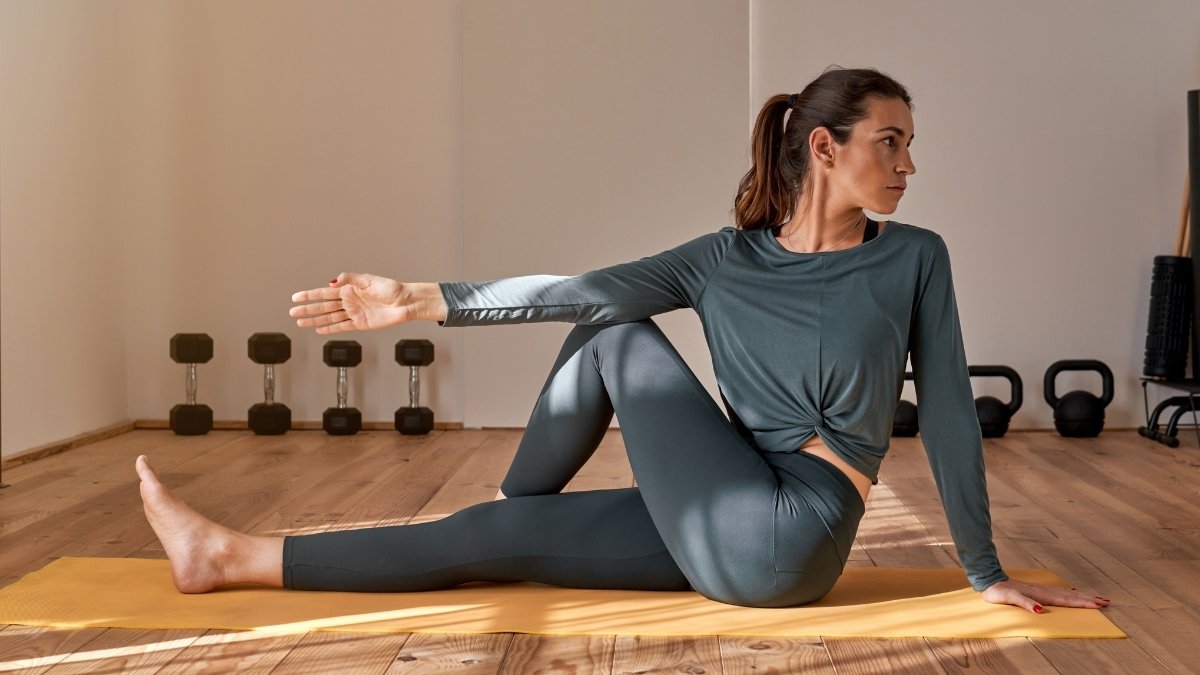
Tips:
- How to perform: Sit tall with feet flat, place hands on opposite shoulders, and rotate slowly from your waist while keeping hips still
- Range of motion: Move only as far as comfortable, never forcing the twist beyond your natural range
- Breathing technique: Inhale before rotating, exhale during the twist, and breathe normally while holding the position
Calf Raises for Ankle Strength and Circulation
Strong calves are essential for walking, climbing stairs, and maintaining balance throughout daily activities. Calf raises target the gastrocnemius and soleus muscles while improving ankle flexibility and promoting better blood circulation in your lower legs.
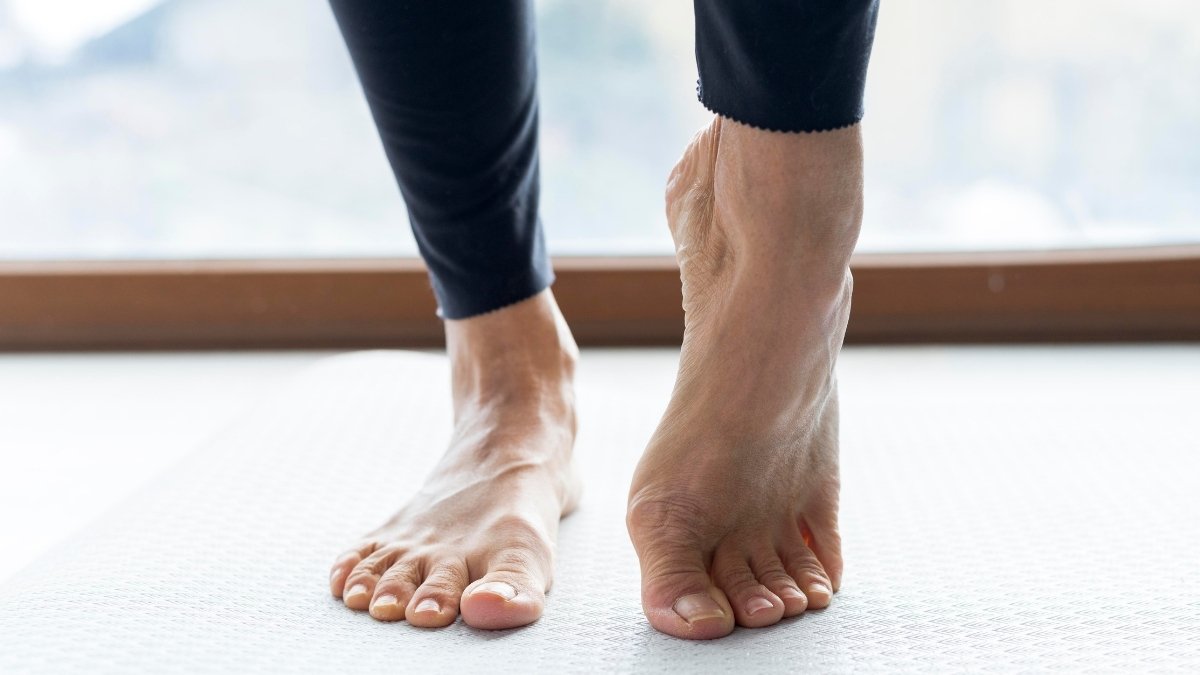
Stand with feet hip-width apart, slowly rise up onto your toes, then lower back down with control. You can perform these exercises while holding onto a chair or wall for support if needed.
The pumping action of your calf muscles helps push blood back to your heart, reducing swelling and improving overall circulation. This simple exercise can be done anywhere and takes just a few minutes to complete.
Tips:
- How to perform: Stand tall, rise onto toes slowly, hold for 2-3 seconds, then lower down with control
- Support options: Use a wall or chair for balance support, gradually reducing assistance as strength improves
- Circulation boost: Perform 15-20 repetitions, 2-3 times daily to maximize blood flow benefits
The Role of Flexibility in Preventing Injury
Maintaining flexibility becomes increasingly important as we age because tight muscles and stiff joints significantly increase injury risk. Flexible muscles can better absorb impact and adapt to unexpected movements, reducing the likelihood of strains and tears.
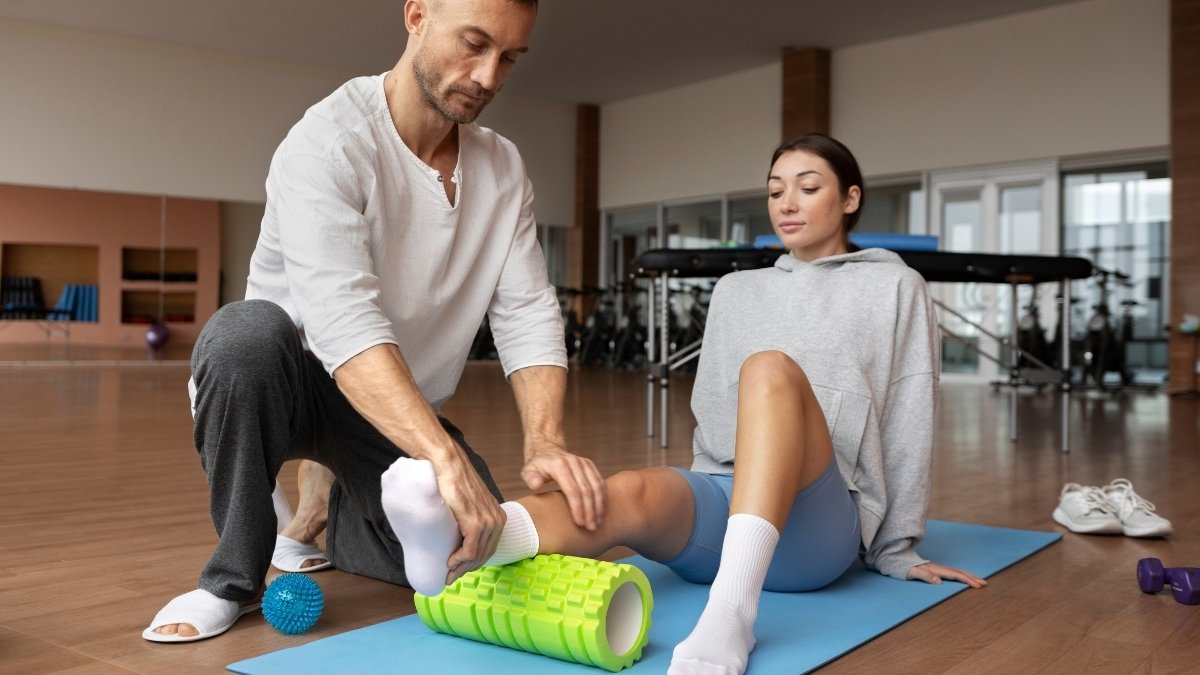
Regular stretching helps maintain joint range of motion, allowing you to perform daily activities with greater ease and confidence. Tight hip flexors, hamstrings, and shoulder muscles are common problem areas that benefit greatly from consistent stretching.
Flexibility work also improves posture, which can reduce back pain and improve overall movement quality. The key is consistency rather than intensity, with gentle daily stretching providing better results than occasional intense sessions.
Tips:
- How to perform: Stretch major muscle groups daily, holding each stretch for 20-30 seconds without bouncing
- Timing strategy: Stretch after warming up or exercising when muscles are more pliable and receptive
- Problem areas: Focus extra attention on hip flexors, hamstrings, shoulders, and neck muscles that commonly tighten with age
Creating a Sustainable Weekly Exercise Schedule
A realistic exercise schedule is crucial for long-term success and injury prevention. Most experts recommend strength training 2-3 times per week with at least one day of rest between sessions.
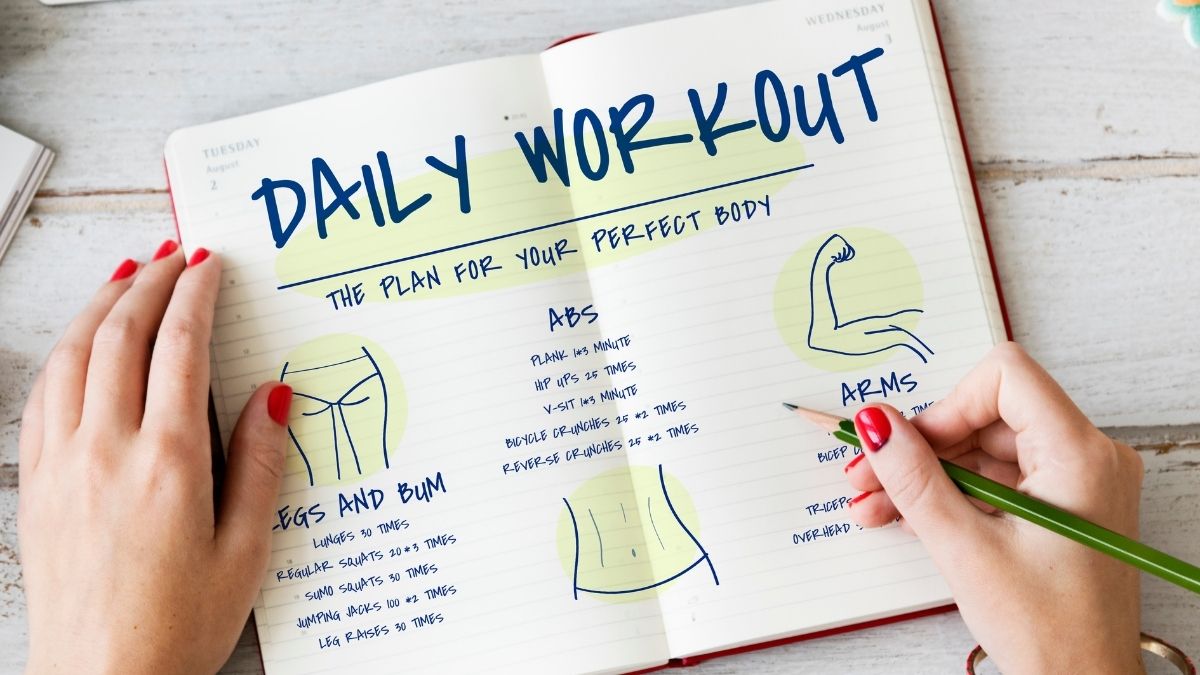
Balance and flexibility work can be done daily since these activities promote recovery rather than requiring it. Start with 20-30 minute sessions and gradually increase duration as your fitness improves. Consistency trumps intensity, so aim for regular shorter sessions rather than sporadic longer workouts.
Consider your energy levels throughout the week when scheduling exercises. Many people find morning workouts easier to maintain, while others prefer afternoon sessions when joints feel less stiff.
Tips:
- How to perform: Schedule strength training every other day, with flexibility and balance work on alternate days
- Weekly structure: Aim for 150 minutes of moderate activity per week, broken into manageable 20-30 minute sessions
- Flexibility approach: Allow for modifications based on how you feel each day, adjusting intensity rather than skipping entirely
Nutrition and Hydration for Exercise Recovery
Proper nutrition becomes increasingly important for exercise recovery as we age because our bodies process nutrients less efficiently than when we were younger. Protein intake is particularly crucial, with older adults needing about 1.2-1.6 grams per kilogram of body weight daily to support muscle maintenance and growth.
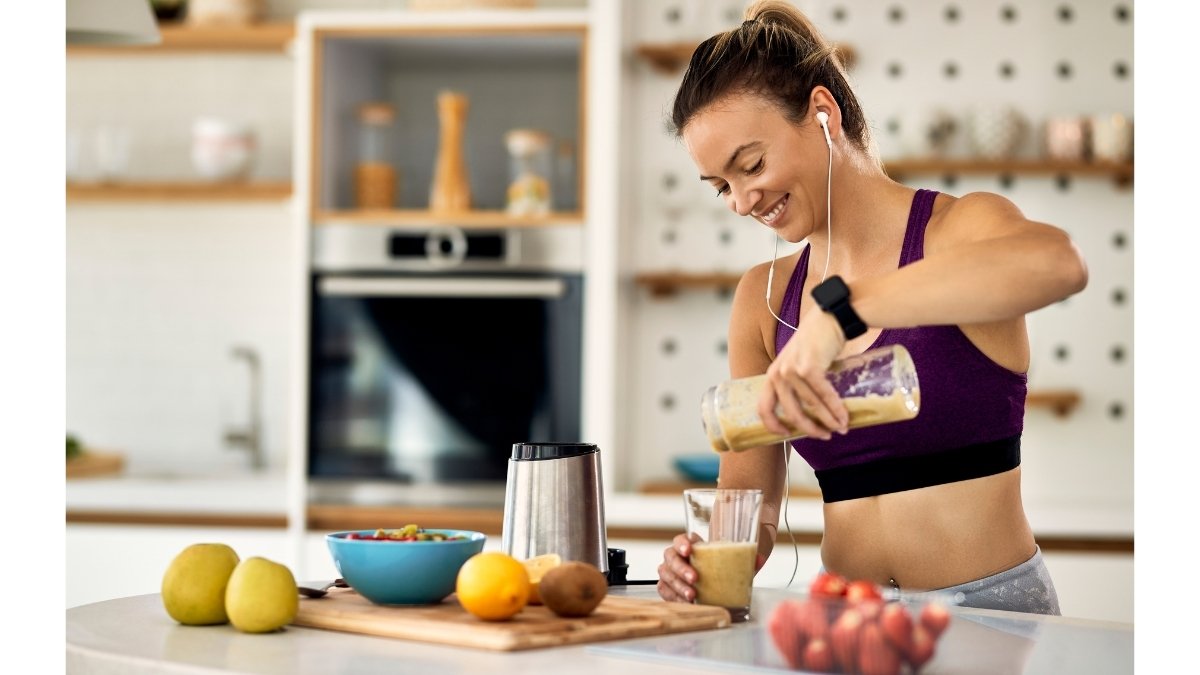
Stay well-hydrated before, during, and after exercise, as dehydration can significantly impact performance and recovery. Calcium and vitamin D are essential for bone health, especially when combined with weight-bearing exercises.
Anti-inflammatory foods like leafy greens, fatty fish, and berries can help reduce exercise-induced inflammation. Timing matters too, with a combination of protein and carbohydrates within two hours post-exercise optimizing recovery.
Tips:
- How to perform: Eat a balanced meal with protein and carbs within 2 hours after exercising, and drink water throughout the day
- Protein priority: Include lean protein sources like fish, chicken, eggs, or legumes with each meal to support muscle recovery
- Hydration target: Drink 8-10 glasses of water daily, increasing intake on exercise days or in hot weather
Monitoring Progress and Adapting Your Routine
Tracking your progress helps maintain motivation and ensures your exercise routine continues to challenge your body appropriately. Keep a simple log of exercises performed, repetitions completed, and how you feel during and after workouts.
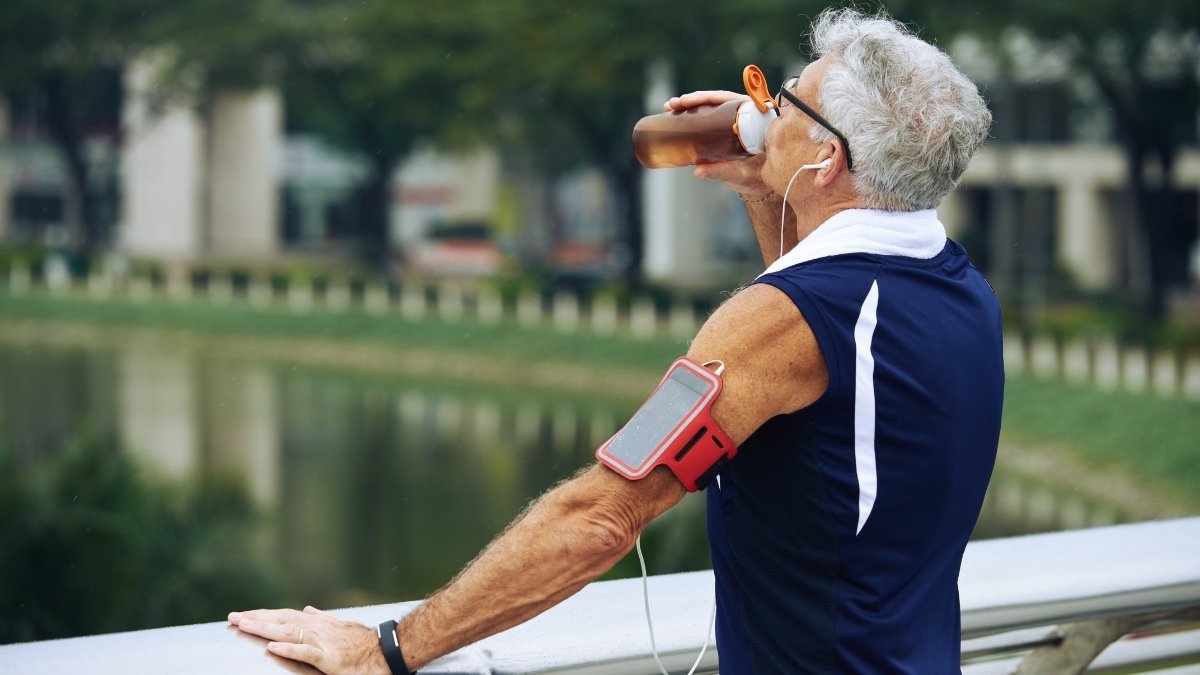
Pay attention to improvements in daily activities like climbing stairs, carrying groceries, or getting up from chairs. These functional improvements often matter more than specific exercise metrics. Be prepared to modify exercises as your abilities change, whether due to temporary setbacks or chronic conditions.
Listen to your body and adjust intensity based on energy levels, joint comfort, and overall health. Regular reassessment every 4-6 weeks helps ensure your program remains effective and enjoyable.
Tips:
- How to perform: Keep a simple weekly log noting exercises completed, repetitions achieved, and energy levels
- Progress indicators: Track functional improvements like walking speed, stair climbing ease, and balance confidence
- Adaptation signals: Modify exercises when experiencing joint pain, excessive fatigue, or loss of motivation to maintain consistency
15 Essential Tips for Home Fitness Success
- Start strength training immediately as muscle loss begins at age 30 and accelerates dramatically after 60.
- Clear a 6×6 foot exercise space with bright lighting and keep a sturdy chair nearby for support.
- Always warm up for 5-10 minutes with gentle movements before any exercise session.
- Master bodyweight squats by sitting back as if into a chair while keeping your chest up.
- Use wall push-ups to build upper body strength without the strain of floor exercises.
- Stretch your hips daily using a chair for support to prevent lower back pain.
- Include balance training 3-4 times weekly to prevent falls and maintain independence.
(Fitness Tips)
- Practice single-leg stands daily, progressing from supported to unsupported positions.
- Choose resistance bands over weights for joint-friendly strength training with variable resistance.
- Perform seated spinal twists to maintain back flexibility and reduce morning stiffness.
- Do calf raises throughout the day to strengthen ankles and improve circulation.
- Stretch major muscle groups daily for 20-30 seconds to prevent injury and maintain mobility.
- Schedule strength training every other day with flexibility work on alternate days.
- Eat protein with each meal and stay hydrated to support muscle recovery and growth.
- Keep a simple exercise log to track progress and adjust your routine every 4-6 weeks.
Final Thought:
Aging doesn’t mean surrendering to stiffness, weakness, or decline—it’s a signal to move smarter. These simple home workouts are not just about staying active; they’re about reclaiming your strength, flexibility, and independence. Whether you’re stretching to ease tight joints or lifting light weights to rebuild muscle, each movement is a powerful step toward aging gracefully.
You don’t need a fancy gym or extreme routines—just consistency, care, and the will to keep going. Your body is capable of change at any age, and every rep adds to your resilience. Remember, motion is the magic that keeps you young. Listen to your body, honor its needs, and let movement be your daily medicine. The best version of you is still unfolding—start where you are and grow stronger, one day at a time.


